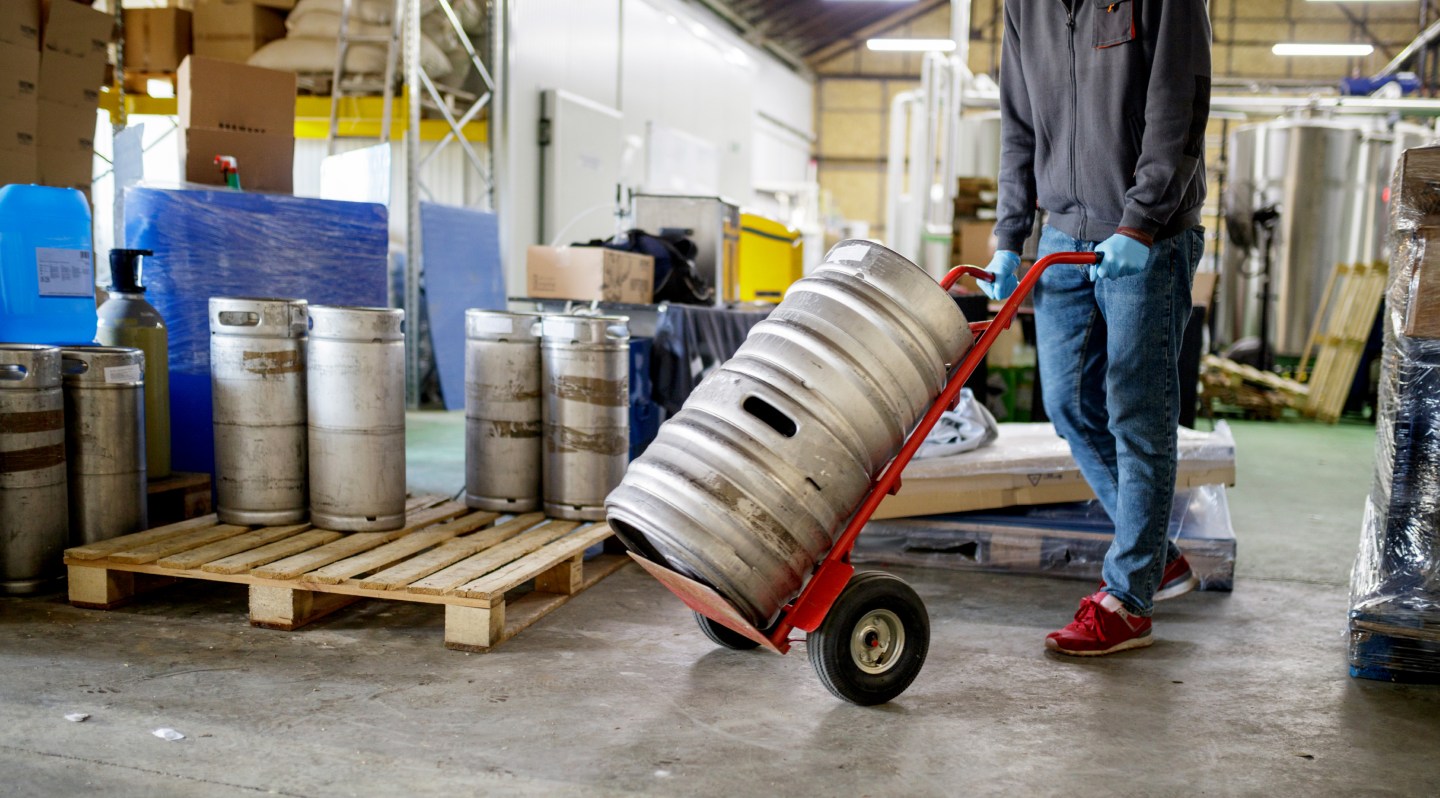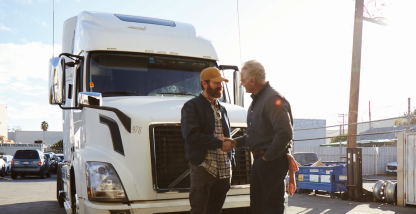Consumers like to crack open a cold one. So much so that the U.S. beer industry shipped more than 2.9 billion cases in 2021. No one wants to spill a drop, especially not the enterprise couriers entrusted with packing and shipping beer for the producers.
This comprehensive guide provides practical strategies to safely ship any kind of beer.
Beer shipping explained
In 2020, the U.S. population over 21 years old has steadily increased, reaching 74% in 2020. Also in 2020, U.S. consumers drank 26 gallons of beer and hard cider per person. Over the past 20 years of Gallup polling, beer has remained the top preference for Americans. In 2021, beer was the first choice for 39% of consumers, followed by wine at 31%, and spirits at 27%.
At the same time, beer inventory has expanded to meet more specific tastes. “The industry shipped approximately 3.5 million barrels of hard cider, perry (an alcoholic beverage made from the fermented juice of pears), and other fermented products, equivalent to more than 49 million cases (24-12 ounce containers) in 2021,” according to the NBWA, a brewing industry group.
The unceasing demand for these refreshments has also seen a historic number of new industry entrants. According to the NBWA, there were 49 breweries in 1983. Today, some states have more breweries than the entire country had in 1990. At the end of 2021, there was an all-time high of 13,380 permitted breweries in the U.S.
Retail stores need beer shipments from discount to big-box to convenience stores. There’s also a wholesale and online market. All in all, there’s a great demand for beer shipping.
How to package beer for shipping
When packaging beer for shipping, the primary goal is to keep the contents secure and fresh. The cans or bottles could experience a bumpy ride without proper safety measures, leading to explosions.
Package the beer using lightweight materials proven to stabilize temperatures and protect contents. You might use insulated foam, pre-molded polystyrene, or molded fiber inserts. Whatever you decide to go with, it needs to be strong enough to prevent breakage and help keep the beer at a consistent temperature.
As beer is an age-restricted, perishable, and commercially limited substance, your packages should be clearly labeled.
The best way for enterprise couriers to ship beer
Shipping beer has special considerations. Cases of canned beer may be more durable, but beer bottles are fragile. Then, whatever the packaging, the optimal temperature for shipping beer is between 37 and 46 degrees Fahrenheit. Too cold, and the beer can freeze. When beer freezes, the water expands and can burst the cans or bottles. Too hot, and the beer can spoil. It’s best to ship beer in a climate-controlled manner to avoid inconsistent temperature risks.
Of course, there are many different ways that shippers package their beer. So you’ll need to know how to ship a variety of beer containers.
Pallets work well when shipping beer. Wood pallets are standard, but plastic pallets are becoming more popular because of their durability. Plastic pallets are also preferable in the food and beverage industry as they don’t absorb spilled liquids. However, wood pallets are prone to mold and mildew growth.
A typical pallet is 48 by 40 inches and can hold 20 1/6 bbl kegs or 14 1/4 bbl kegs, or 8 1/2 bbl kegs. Equipped Brewer estimates, “A pallet stacked with full kegs weighs approximately 1,200 – 1,400 pounds.” The pallets can only be stacked two high, since the bottom pallet has a weight limit.
How to ship a case of beer
When shipping a case of beer, the weight is a factor in how many cases can go on a pallet. A 12-pack of 12-ounce beer cans weighs about 20 pounds. As a result, many shippers limit the number of beer cases per pallet to 100. That’s 2,200 pounds. To avoid overweighting the truck, consider the weight of the pallets as well. Overstocking is also to be avoided.
Shipping beer bottles
When shipping beer bottles, first secure the caps on the bottles. Unless the caps are already waxed, you’ll want to be sure you secure them in case they get caught on other materials. A snag can cause the cap to come off or leak. Then, wrap the beers in plastic followed by padding to prevent scratches, dents, or bottle breakage. Adding a layer of protection between the top and bottom of the box and between the bottles can help prevent damage.
Another type of bottle you might ship is a growler. A typical growler is about 11 to 12 inches tall and about 5 to 6 inches wide. Place the growler in a plastic shipping bag to protect against scratches. Then, seal the bag and wrap it in padding like bubble wrap to keep the growler from breaking inside the box. Make sure there isn’t too much space left over; the bottle will rattle around. If there’s too little space in the box, there might not be enough padding to protect the bottle.
Shipping beer cans
When shipping beer in cans, you’ll want to situate them firmly in the shipping box. Surround them with molded fiber, polystyrene box inserts, bubble wrap, or even newspaper. Avoid too much extra space above the tops of the cans when you close the box.
Put shipping labels on the top of the box. Shipping labels can help expedite the loading and unloading process by providing clear instructions on how to place the packages in the truck. You can also add directional stickers and labels to mark packages containing alcohol content.
How to ship beer legally
Unsurprisingly, you can’t just ship beer anywhere to anyone. There are different federal and state regulations to abide by.
To begin, legally shipping beer requires:
- A valid business license that demonstrates you have an EIN and are lawfully conducting business in your home state.
- A manufacturer or dealer’s license that proves you’re sourcing alcoholic beverages legally.
- A shipping license to track which businesses are sending alcoholic products across state lines.
Beer shipping laws and regulations
Protect your shipments from federal or state penalties by understanding beer shipping laws and regulations. Licensed manufacturers or dealers can ship beers to retailers. However, retailers can’t ship to other commercial entities. Commercial entities also can’t ship beer directly to consumers, unless they’re in particular states. All beer shipments require a signature from an adult over 21 years of age accepting the package.
What states allow beer shipping?
When Prohibition ended in the 1930s, states gained the power to enact their own alcohol laws. This extends to how beer is shipped. When beer crosses state borders, shippers must consider the laws for both the shipping and the receiving state.
According to the National Conference of State Legislatures:
- “The majority of states have statutory provisions that allow for out-of-state manufacturers to ship alcoholic beverages directly to consumers.”
- “Out of the 54 states, territories, and commonwealths, Guam, Puerto Rico, and the U.S. Virgin Islands do not have statutes that specify that direct shipments are allowed.”
- “Delaware requires that shipments must be delivered to a wholesaler, then delivered to consumer by a retail license.”
- “Rhode Island requires that the consumer must be present at purchase to ship the alcohol to the consumer.”
- “Eight states allow the direct shipment of beer as specified: Delaware, Massachusetts, Montana, North Dakota, Ohio, Oregon, Vermont and Virginia. Connecticut and New Jersey allow shipments of wine, cider and mead.”
- “New Mexico authorizes the shipment of wine and cider.”
- “Oregon allows the shipment of beer, wine and cider. Arkansas allows the shipment of wine and mead.”
How to be the best beer shipping service
Alcoholic beverages and any kind of liquid products in glass bottles are considered dangerous for shipping. Providing the best beer shipping service means paying special attention to fragile cargo.
Add auditing measures to ensure the packages are shipped securely. Those loading and unloading beer shipments need to make sure they’re paying attention to directional cues. Plus, they need to strap in the cargo and avoid accidents.
Taking care not to ship beer in extreme temperatures can also help your company stand apart from the competition as a premium beer shipper.
The best beer shipping service will also optimize delivery routes, communicate with customers about the estimated time of cargo delivery, and track the necessary paperwork for easy auditing and accountability.
What we can learn: shipping beer FedEx
- Establish beer shipping criteria to ensure you’re vetting customers against federal and state regulations.
- Have an approval process in which a fleet team member first verifies business licensing, dealer, or manufacturer licensing, and shipping licensing.
- Offer a variety of shipping services. FedEx ships beer through FedEx Ground when shipments aren’t time-sensitive, via FedEx Express when expedience is needed, and FedEx Home when the recipient is a residential address.
What we can learn: shipping beer UPS
- Communicate beer packaging requirements upfront. When shipping beer, UPS accepts folded corrugated cardboard, molded fiber tray inserts, or expanded polystyrene foam (EPS).
How to ship beer effectively using Motive software
Motive’s fleet management technology can help companies legally and successfully ship beer.
Motive’s easy-to-use software helps fleets optimize routes to ensure on-time deliveries. With real-time fleet tracking, you receive dispatch notifications that allow you to keep customers current on delivery ETAs. Efficient routing also helps you, and your shippers, achieve sustainability goals by saving fuel. These benefits keep drivers and the beer cargo safe.
In addition to supporting safe beer shipping, Motive’s improved dispatch workflows and automation are designed to keep your beverage delivery fleet on time and safe, and can improve profit margins. Minimize violations and stay updated on legal requirements with Motive’s ELD compliance solution and the Motive Driver App.
Plus, the predictive maintenance tools ensure fleet vehicles are working their best, which can help provide fragile cargo with a smoother ride. The geofencing feature can also assist fleet managers in tracking vehicles to prevent cargo theft. We’ll cheers to that. Request a demo today.










